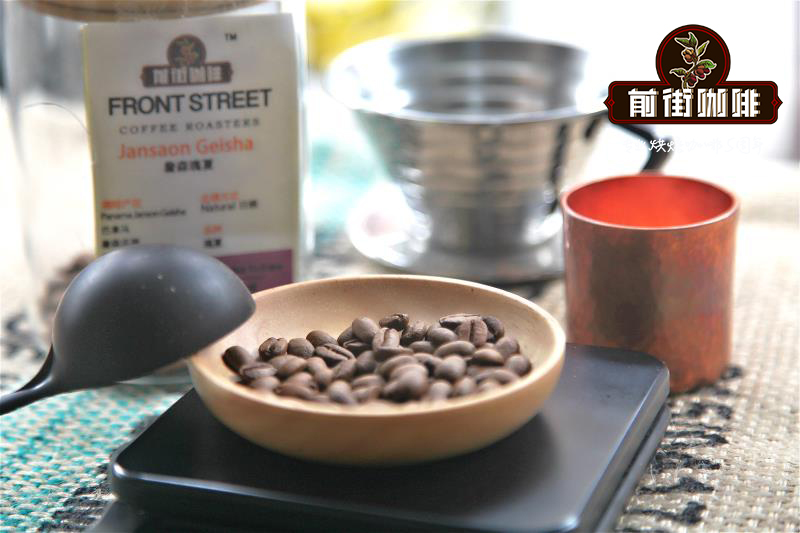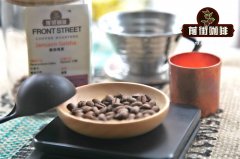What is the best coffee bean? robusta coffee beans are good to eat and drink? how to cook them?

Professional coffee knowledge exchange more coffee bean information please follow the coffee workshop (Wechat official account cafe_style)
Colombia has long grown only first-class Arabica coffee beans, but now that trend has changed! Demand for robusta coffee beans has soared in emerging markets, and Costa Rica, which has always looked down on the beans, has also begun to join the growing ranks.
Coffee farmers have always preferred Arabica coffee beans (arabica), which are mild in flavor and relatively expensive, while robusta coffee beans (robusta), which are mostly used to make instant coffee or blended coffee, are less favored.
Andrew Hetzel, a consultant in the boutique coffee industry, says Robusta tastes so strong that some even describe it as "rubber tires", "oil barrels" or "children's tears".
As a result, Arabica beans now account for 65% of global coffee production. However, this trend is now changing! Global demand for robusta beans is rising, especially in Asia, prompting Latin American countries to start mass production of the relatively cheap beans.
At present, both Guadilama and Nicaragua are expanding the production areas of Robota beans. Costa Rica also lifted the ban on growing robusta beans in February. Even Colombia, which has always looked down on this kind of coffee beans in the past, has begun to break with tradition and start experimental planting.
Colombia used to be reluctant to produce robusta beans, mainly for fear of tarnishing the country's reputation for only high-quality coffee beans.
But now some coffee gluttons have come forward to put in a good word for Robusta. They stress that robusta beans don't taste bad at all if they are produced in the right area.
The demand of large bakery industry is increasing.
Ricardo Piedrahita, a sustainability manager at Nestl é Columbia, points out that "there is a growing demand for Robusta beans from large coffee roasters." Nestl é buys about 5% of the country's annual coffee bean production.
The Costa Rican Ministry of Agriculture has an exclusive nursery near the town of Monteria, and agronomists are bidding for 3, 000 robusta beans from France and Mexico.
In order to inspect these seedlings crossing the ocean, visitors must first put on blue disinfection overalls and protective caps, wash their feet, and pass through three special doors to prevent insects and microbes from entering before they can get inside.
Juan Carlos Perez, an agronomist affiliated with the government, treats these robusta bean seedlings as if they were his own children. He gently stroked the branches, marked with orange marks and numbers.
He, from a coffee grower, said that although Arabica beans are of good quality, there will not be much loss if they are allowed to plant Robbata beans on an experimental basis.
The wholesale price of robusta beans this year is about 87 cents per pound, while Colombian Arabica beans are $1.39. However, Asia, which is mainly dominated by robusta beans, is now the region with the fastest growth in global coffee sales, and consumption is expected to grow by 3.1% this year, compared with 0.5% in Europe and 2.6% in North America.
Robusta is easy to plant and has high harvest.
James Watson, a soft drink analyst at Rabobank, believes that for coffee farmers, Robusta has advantages that Arabica cannot match, such as strong resistance to diseases and insect pests, easy planting and high harvest rates.
The taste of robusta beans is its deadliest, but Jorge Cuevas, chief coffee officer of Sustainable Harvest importers, believes it is a non-war crime because growers do not take good care of coffee beans, unlike Arabica. He explained that the robusta coffee tasted full of foam and strong flavor, and was often used to make espresso. For example, if Robusta walks into a bar with Arabica, the latter will soon blend in, but the former is so "noisy, funny and charming" that you can't ignore it.
Important Notice :
前街咖啡 FrontStreet Coffee has moved to new addredd:
FrontStreet Coffee Address: 315,Donghua East Road,GuangZhou
Tel:020 38364473
- Prev

How to eat coffee beans, how to drink coffee beans, how to grind coffee beans, how to cook coffee beans, how to cook coffee beans, how to eat coffee beans, how to drink coffee beans, how to eat coffee beans, how to drink coffee beans, how to grind coffee
Professional coffee knowledge exchange more coffee bean information please pay attention to the coffee workshop (Wechat official account cafe_style) how to select the types of high-quality coffee beans: first look at raw beans, and then look at cooked coffee beans many well-known foreign coffee factories, in order to provide high-quality products before roasting coffee beans will make some efforts, tasters will according to their own taste and
- Next

Global coffee bean planting and production what is the position of Yunnan coffee beans in the world
Professional coffee knowledge exchange more coffee bean information please follow the coffee workshop (Wechat official account cafe_style) Yunnan boutique coffee root search trip old variety iron card new variety Katimo mentioned Yunnan boutique coffee, maybe the most common word we hear is Yunnan small grain coffee beans, and most of them will say that Yunnan small grain coffee is fragrant but not bitter, strong but not strong, so a lot of
Related
- Beginners will see the "Coffee pull flower" guide!
- What is the difference between ice blog purified milk and ordinary milk coffee?
- Why is the Philippines the largest producer of crops in Liberia?
- For coffee extraction, should the fine powder be retained?
- How does extracted espresso fill pressed powder? How much strength does it take to press the powder?
- How to make jasmine cold extract coffee? Is the jasmine + latte good?
- Will this little toy really make the coffee taste better? How does Lily Drip affect coffee extraction?
- Will the action of slapping the filter cup also affect coffee extraction?
- What's the difference between powder-to-water ratio and powder-to-liquid ratio?
- What is the Ethiopian local species? What does it have to do with Heirloom native species?

